 25 Oct 2023
25 Oct 2023
Nutritional Value of Soybeans in Poultry Feeding
Soybeans are currently the most cultivated oilseed for oil extraction, but at the same time, their products have become the ideal source for animal feed. Depending on the processing method, you can obtain:
There can be variations between these products depending on whether the soybean hulls are removed or not in the process before solvent extraction or before extrusion, and other details during the bean processing. All of these products are currently common in poultry feed.
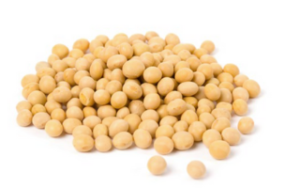
There are other processes such as micronization and fermentation that improve digestibility and increase nutrient concentration. That’s why they are called soybean concentrates, which are less commonly used in poultry farming.

However, they are eventually observed in some starter diets and in organic production systems. Soybean concentrates obtained through fermentation can have protein contents ranging from 52% to 55% and can reduce antinutritional factors such as trypsin inhibitors and oligosaccharides.
Through micronization, soybean concentrates with 51% crude protein and 93% digestibility can be achieved. This is accomplished through a mechanical particle size reduction process ranging from 50 to 250 μm and low-temperature thermal treatment, typically using infrared radiation for an extended period. However, these processes are less common, and the resulting products are less commonly used in poultry nutrition.
Soybean meal
Soybean meal extracted by solvent remains the most common and compositionally stable source of protein and amino acids.
It is produced in larger quantities and is generally more competitively priced for poultry feed than other ingredients. Its amino acid content and balance, as well as its lower variability, make it ideal for inclusion in poultry diets at higher levels compared to other plant-based ingredients or raw materials.
Soybean production is highly concentrated in countries such as:
The country of origin of soybeans has a significant impact on the nutritional composition and energy value. The primary factor of variability is always the genetics of the seeds, but depending on the prevalent soil and climate, even the same genetic variety of soybeans can exhibit different nutrient deposition and the development of antinutritional factors.
Latitude affects the number of daylight hours the plant is exposed to during its growth and can be an important factor in determining nutritional value. Soybeans from Brazil and Paraguay, located in subtropical regions, contain more oil, more crude protein, and less sugars than soybeans from Argentina and the USA. Brazilian soybeans also have higher content of neutral detergent fiber and iron.
With the incentives provided by the U.S. government for biodiesel production, soybean oil extraction is increasing at a rapid pace in the USA. According to the USDA, soybean meal production could grow to 49.35 million tons.
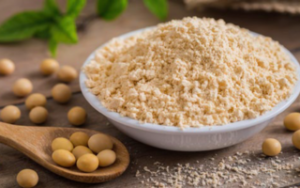
 Soybean meal exports from the USA could increase by 907 million tons to reach 13.43 million tons this year. It is likely that soybean meal will increase, but the availability of soybeans for extrusion may decrease. Therefore, we will focus this presentation on soybean meal.
Soybean meal exports from the USA could increase by 907 million tons to reach 13.43 million tons this year. It is likely that soybean meal will increase, but the availability of soybeans for extrusion may decrease. Therefore, we will focus this presentation on soybean meal.
Composition and digestibility
The protein content of soybean meals ranges from 44 to 48.5%, and it contains all essential and non-essential amino acids in high levels, except for sulfur-containing amino acids. In order of concentration, the amino acids present in soybean meals are:
Soybean meal has high levels of the following essential amino acids:
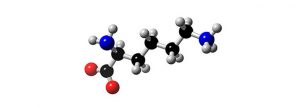
The content of essential amino acids in soybean is not proportional to the protein level, as soybeans can contain various non-protein nitrogen compounds. The digestibility of amino acids in soybean meal varies among amino acids and according to the determination methods (Table 1).
However, they are among the highest within plant-based protein sources. Another factor affecting the content and digestibility of amino acids is the origin of the soybeans and the thermal processing. The presence of trypsin inhibitors due to under processing or Maillard reactions due to overprocessing or excessive temperature can negatively impact amino acid digestibility.

Energy Value
Soybean meals also provide between 20 and 30% of metabolizable energy in poultry diets. New equations for estimating the energy of soybean meals indicate that the value depends on the amount of digestible protein, ether extract or lipid fraction, sucrose content, and fermentable oligosaccharides. Energy values of soybeans range between 2120 and 2450 kcal AME/kg. However, the utilization of nutrients and their conversion into energy can be affected by the presence of common antinutritional factors found in all plants, especially oilseeds.
Antinutritional Factors
Among these nutritional factors are phytate, trypsin inhibitors, non-starch polysaccharides (NSP), saponins, lectins, oligosaccharides, and phytoestrogens. Trypsin inhibitors and lectins are sensitive to heat, and thermal processing can reduce their presence. However, soluble components like the oligosaccharides raffinose and stachyose are not affected by temperature.
The concentration of oligosaccharides in soybean meals is approximately 10%, divided into roughly 5% sucrose, 4% stachyose, and 1% raffinose. The concentration of NSPs ranges from 15% to 25% and consists of cellulose polymers, hemicelluloses (pentosans, arabinoxylans, xylans, β-glucans), and pectin polysaccharides (glucomannans, galactomannans, arabinans, xyloglucans, and galactans).
NSPs can also be divided into soluble (3-4%) and insoluble (8-15%) fractions. Insoluble NSPs are cellulose polymers and some hemicelluloses, while the soluble fraction comprises pectins and the hemicellulose component. High levels of soluble NSPs can reduce the digestibility of amino acids, mineral absorption, and lipid absorption. This effect is due to the increase in these compounds in the digestive tract, which interferes with nutrient utilization.
Proximate analyses and amino acid content assessments of soybeans are very common. However, the estimation of the energy value is variable depending on the equation used.
For digestibility assessments, fixed coefficients determined by research studies are commonly used, but in reality, these vary depending on all the factors mentioned earlier. Evaluations of oligosaccharides and NSPs are less frequent.
Calibration curves for NIRS (Near-Infrared Spectroscopy) have been developed with in vivo data to estimate apparent metabolizable energy (AME and AMEn) and amino acid digestibility coefficients. In other words, this energy estimation does not rely on equations with individual chemical compounds. One of these NIRS calibration curves belongs to the PNE service of the Adisseo company.

This NIRS service has been widely used around the world, and there is a wealth of soybean meal data from various sources. In collaboration with Adisseo, we explored their global database containing 77,621 samples of soybean meal from Argentina, Brazil, and the USA. We identified variability in soybean meal samples between 2018 and 2021 in terms of energy content, amino acids, and amino acid digestibility.
Despite the variability between years, we observed differences between the countries. These differences have already been reported in multiple scientific articles from research studies that used selected samples analyzed in various laboratories.
In the results of the NIRS (Near-Infrared Spectroscopy) analysis, it was observed that Brazilian soybean meal had the highest values for crude protein, fat, and crude fiber, but the lowest values for AME (Apparent Metabolizable Energy, Figure 1) and AMEn. Soybean meal from the USA had the highest energy levels (AME and AMEn) and intermediate values for crude protein, fat, ash, and crude fiber.
Brazilian soybean meal had the highest levels of Lysine (Lys), Valine (Val), Isoleucine (Ile), Leucine (Leu), Phenylalanine (Phe), and Histidine (His). Argentine soybean meals contained more sulfur-containing amino acids, Threonine (Thr), and Tryptophan (Trp), but lower levels of Lys, Val, Ile, Leu, Phe, His, and Arginine (Arg).
Soybean meal from the USA had the highest concentration of lysine and essential amino acids (Figure 2) in proportion to the protein and the highest digestibility for all amino acids, except for Lysine, Leucine, Histidine, and Arginine.
Brazilian soybean meal had the highest digestibility for Lysine and Isoleucine, intermediate digestibility for sulfur-containing amino acids, Trp, Valine, and Phenylalanine, and the lowest digestibility for Threonine, Leucine, Histidine, and Arginine. Argentine soybean meal had the lowest digestibility of Lysine.

All nutrients vary, and the direction of these variations is not consistent among the different countries. This can be confusing and may lead to the perception that there are multiple, but less significant, changes. This same phenomenon has been observed in scientific publications over the past 20 years.
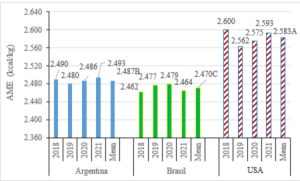
Figure 1. Average energy values (AME kcal/kg) of soybean meals (88% dry matter) from Argentina, Brazil, and the United States obtained by NIRS from Adisseo’s NIRS service between 2018 and 2021.
However, by utilizing all the values in the ingredient matrix within the least-cost formulation software, it becomes possible to see the final outcome. We conducted various formulation exercises for broilers and laying hens, and these results will be presented in LPN and in an article for NutriNews LATAM.
In conclusion, soybean meal from the USA consistently demonstrated a better overall nutritional value, allowing for a reduction in the cost of poultry diets.
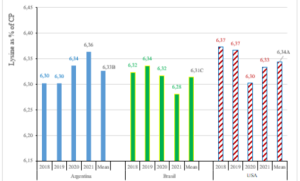
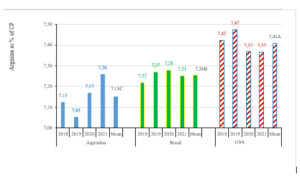
Figure 2. Lysine and arginine as a percentage of crude protein in Argentine, Brazilian, and US soybean meals, determined by NIRS with the Adisseo PNE system in samples collected between 2018 and 2021.
Additionally, numerous tests with chickens have shown better responses in groups fed diets containing soybean meal from the USA. These responses may also be attributed to a consistently finer particle size, typically around 1,100 μm. This coarser particle size is considered favorable for better energy utilization and minimizing trypsin inhibitor issues.
It has also been observed that soybean meals from the USA have the lowest concentration of multiple mycotoxins among all the evaluated sources. These results were recently published in another article in AviNews LATAM.

You may also be interested in reading: “Mycotoxin levels in soybean meals”
Subscribe now to the technical magazine of animal nutrition
AUTHORS

Nutritional Interventions to Improve Fertility in Male Broiler Breeders
Edgar Oviedo
The Use of Organic Acids in Poultry: A Natural Path to Health and Productivity
M. Naeem
Synergistic Benefits of Prebiotics and Probiotics in Poultry, Swine, and Cattle
Gustavo Adolfo Quintana-Ospina
Hybrid Rye Potential in Laying Hen Feed Rations
Gwendolyn Jones
A day in the life of phosphorus in pigs: Part I
Rafael Duran Giménez-Rico
Use of enzymes in diets for ruminants
Braulio de la Calle Campos
Minerals and Hoof Health in the Pregnant Sow
Juan Gabriel Espino
Impact of Oxidized Fats on Swine Reproduction and Offspring
Maria Alejandra Perez Alvarado